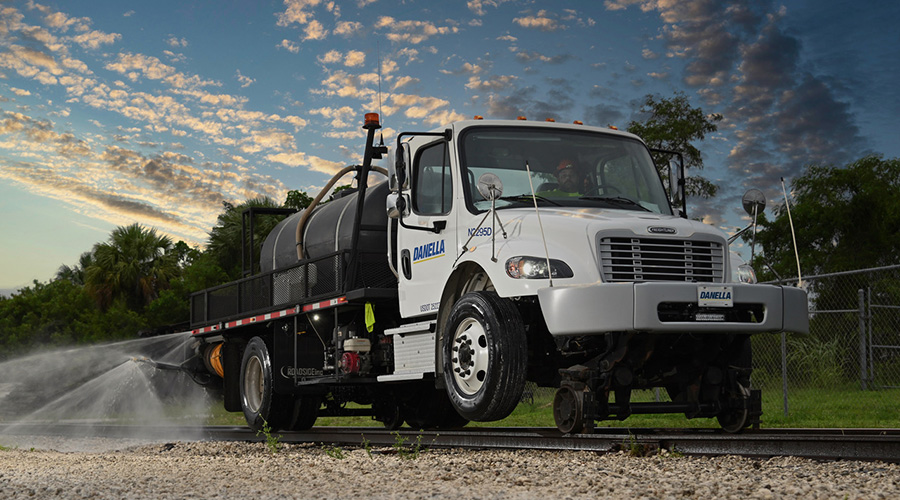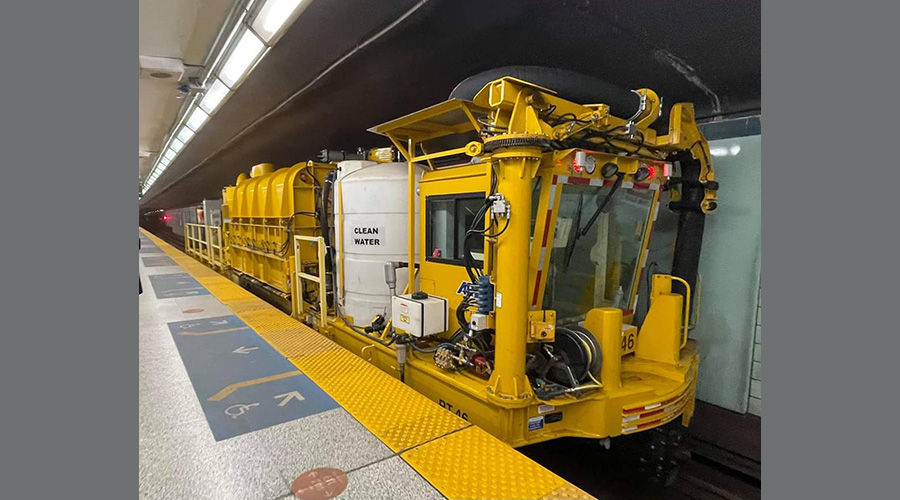Stay updated on news, articles and information for the rail industry
May 2020
Rail News: MOW
Product roundup: Special trackwork 2020
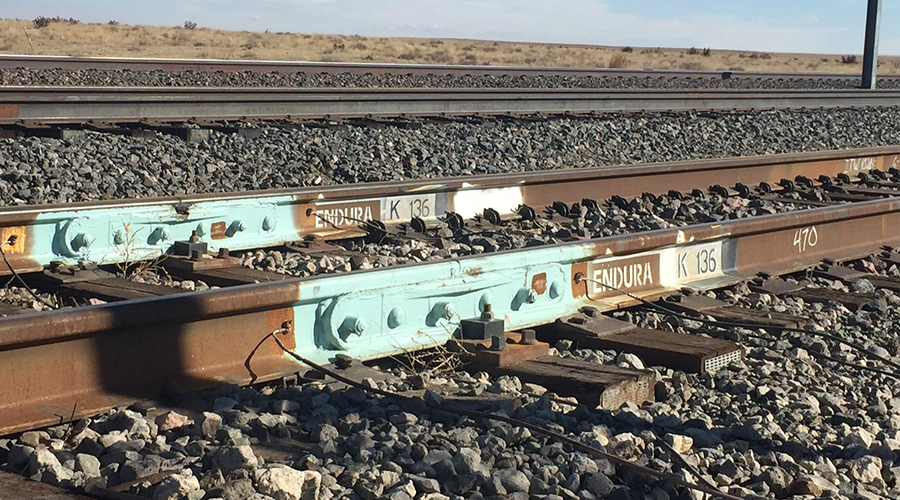
Complied by Vesna Brajkovic, Associate Editor
Progressive Railroading last month reached out to a sampling of suppliers of special trackwork to share information on some of their newest products and systems — from partial flange bearing turnouts and crossings to insulated rail joints and more. Emailed responses from six suppliers follow.
Atlantic Track
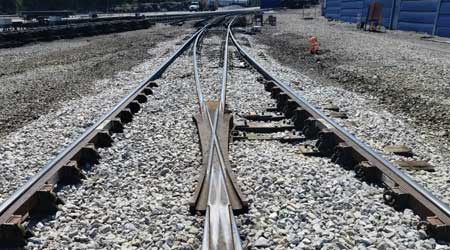
Atlantic Track’s Partial Flange Bearing (PFB) turnouts feature a newly redesigned boltless adjustable U-69 guard rail that offers “a greater degree of safety at time of installation and lower maintenance,” said John McDonald, Atlantic Track’s railroad division vice president.
PFB turnouts — which have been installed and are performing well in heavy-haul applications — also extend life cycle, and promote roadbed stability and vertical load reduction at the point of frog, extending benefits to below the tie, he said.
The PFB footprint was designed to match RBM frogs for a “plug and play” option. Class I, regional, industrial and short-line railroads “can benefit greatly from this new implementation as precision scheduled railroading continues to be utilized,” McDonald said.
Additionally, Atlantic Track’s transit division has begun more work with vintage and modern streetcar systems.
Iron Horse Engineering Co.
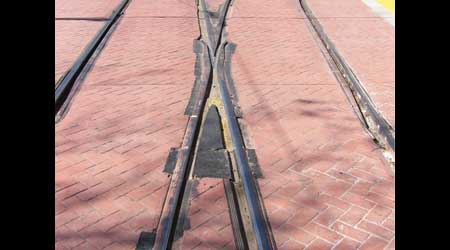
Iron Horse Engineering Co. designs and produces rail material products for the support and isolation of special trackwork in embedded track. The company specializes in direct-fixation track solutions for industrial track, maintenance facilities and yards and the transit industry.
Differing track conditions exist where rails are encased in concrete compared with open ballasted track. Within embedded special trackwork, vibration mitigation requires “special considerations to ensure the longevity of the track and surrounding concrete,” company officials said.
Iron Horse offers the IHECO Electrical Rail isolation and vibration encapsulation of special trackwork components, including the company’s IsoFlex Elastomeric Rail Grout, custom frog and switch under rail pads, insulated anchors and insulated bushing assemblies. Encapsulation can be performed on site or in trackwork manufacturers’ facilities.
The company also works with special trackwork manufacturers to produce steel and composite leveling and gauge ties within special track to support the turnout prior to concrete embedment. The company designs a custom system for the complete turnout, crossing, diamond, expansion joint and other special track systems.
One of the first railroad construction products Iron Horse offered was the Gauge Support Fixtures (GSF) or Jigs for “top-down” construction of direct-fixation and embedded track. GSFs support the rail from above, holding gauge and alignment prior to pouring concrete, “significantly reducing installation times,” company officials said.
L.B. Foster Co.
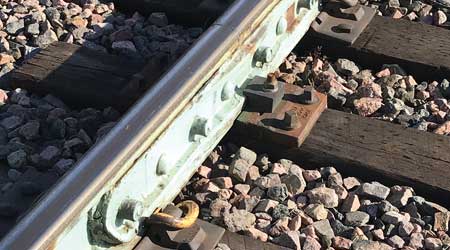
L.B. Foster Co. supplies a range of differentiated products, including insulated rail joints to its North American special trackwork customers.
The ENDURA-JOINT™ IJ incorporates discrete design elements and improved materials, combining a ceramic end post, high-strength insulated tie plate, proprietary TEMPRANGE™ III adhesive and a forged steel high modulus insulated joint bar, company officials said.
The ceramic end post is a key structural element that provides an effective method to spread load over the joint bars and epoxy insulation layer, L.B. Foster officials said.
The ENDURA-JOINT is available in poly-ceramic and fiberglass-ceramic versions.
L.B. Foster also recently developed a Transition Insulated Joint designed to enable “time- and cost-efficient installation” by using machined rail that can be easily installed in worn track, company officials said.
“Class Is have embraced this design as they focus on maintenance projects versus new construction, given the current operating environment,” officials said.
Other recent product introductions include the GEN2 forged steel IJ plate with a polyurethane coated rail seat. A high-performance plate that permits center supporting of the IJ on a railroad tie, the plate enables railroads to “see enhanced life and reduced maintenance of their IJs and track structure,” company officials said. The plate’s design incorporates rotatable rail clips suitable for use on multiple joint bar configurations, and is available for a variety of rail seat widths and canted or non-canted configurations.
Progress Rail
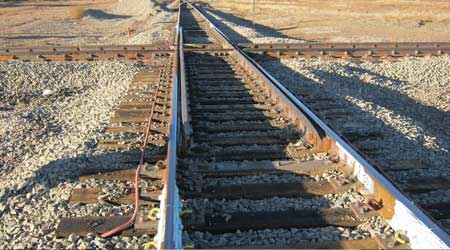
Progress Rail offers an array of special trackwork products. The company delivers a full infrastructure product line to Class Is, transit agencies, regional and short-lines, and also serves contractors and the industrial market. The company recently acquired Cleveland Track Material, increasing its capacity and product offerings to include bridge joints.
Progress Rail has built more than 50 full flange bearing crossings since the early 2000s.
“When properly maintained, these crossings have proven to reduce vertical alignment issues and component failures,” company officials said. The design of Progress Rail’s one way, low speed crossing “ensures a competitive option with a typically a shorter lead time,” they added.
Progress Rail recently built a full flange bearing double crossover for direct-fixation track, as well as an embedded turnout for the transit industry. “We continually work to reduce joints and impacts in special trackwork and evaluate component life” to address noise and vibration in the transit market, company officials said.
Meanwhile, the company’s clamptite boltless adjustable rail brace is designed to keep stock rail secure, from installation through tamping cycles. Since introducing its lift frog, Progress Rail has shipped more than 4,000 units. And “mating” the lift frog with the company’s vertical switch design creates an “invisible” turnout, company officials said.
“Our team recently designed and built a derail switch based on our vertical switch design,” they said. “By eliminating the traditional vertical interface between the wheel and switch point, the vertical switch and derail reduces maintenance and component replacement.”
To eliminate rail movement in the crossing, Progress Rail also developed a sliding rail or expansion joint to prevent alignment deviations and component failures. It’s also available for bridge use, company officials said.
voestalpine Railway Systems Nortrak
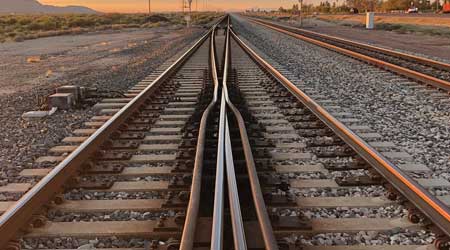
Last month, voestalpine Nortrak officially became known as voestalpine Railway Systems Nortrak.
In the past, Nortrak was known primarily as a turnout manufacturer, but the company now has a North American engineering team with “over 400 years of design experience in all aspects of railway systems,” including special trackwork, concrete, plastics, fastening systems, rail and signaling experts, said Chief Executive Officer Dave Millard.
“With a multidisciplinary approach to solving customer problems, we are capable of treating different track infrastructure components as a system, and can deliver a complete railway systems solution.” he added.
One example of the company’s new approach relates to the installation of pre-assembled turnout panels on concrete ties. Although a small part of the overall system, the rail brace plays a critical role in the installation process, Millard said.
Braces that aren’t designed to withstand installation forces of up to five times normal service loads can lead to the stock rail rolling out of the seat, and the corresponding ties to disengage from the stock rails. The resulting delays can overrun work blocks, delay trains and present a safety hazard to nearby employees. Enter the company’s ClickTite™ rail brace, which is designed to provide the clamping force needed to overcome this issue, Millard said. Two Class Is recently began using the brace, he said.
Email comments or questions to vesna.brajkovic@tradepress.com.
Keywords
Browse articles on Special trackwork Atlantic Track Partial Flange Bearing turnouts John McDonald Iron Horse Engineering IHECO Electrical Rail IsoFlex Elastomeric Rail Grout Gauge Support Fixtures L.B. Foster ENDURA-JOINT insulated rail joints Progress Rail Cleveland Track Material voestalpine Railway Systems NortrakContact Progressive Railroading editorial staff.


 LRW Honors Amtrak’s Acheson As Railway Woman Of The Year
LRW Honors Amtrak’s Acheson As Railway Woman Of The Year
 From Editor-In-Chief Foran: Of Gender Equity And Inclusion
From Editor-In-Chief Foran: Of Gender Equity And Inclusion
 Spotlight On Some Of Today’s Rail Safety Products
Spotlight On Some Of Today’s Rail Safety Products
 Women of Influence in Rail eBook
Women of Influence in Rail eBook
 railPrime
railPrime




